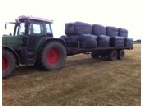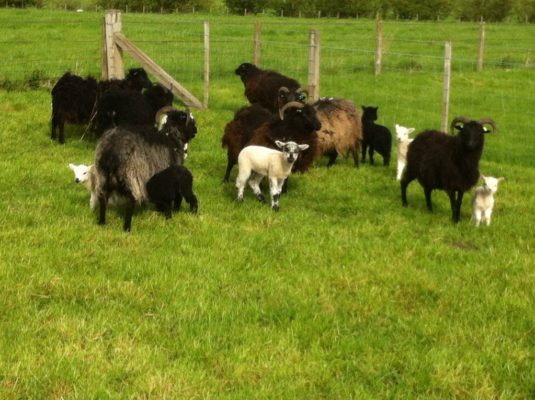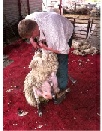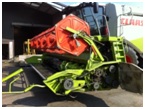On the farm June & July
Activity on the farm has gone up a notch over the last week as we try to take advantage of the dry weather. We got the lambs clipped ahead of schedule as the wool had started to rise anyway, and it’s always best to get it off as early as possible. In warmer weather the sheep can get bothered by flies which love to lay eggs in damp wool – the less wool thee is then the fewer problems we will have with “strike” as it’s called. We don’t dip the sheep any longer but use a spray on product instead which helps protect against insects and parasites which may be present. Its probably not quite as effective as full dipping but it’s certainly less stressful for both the sheep and us – we can also do a second dose later in the season if needs be.
We have started taking the first draw of this seasons lambs – the big singles have done very well with decent weather and good grass growth. It’s always interesting to check the grading’s against what we estimated when we were selecting and the first few have been a pleasant surprise, with a slightly better weight and conformation than we were expecting. We select lambs on size and by feeling by hand how much fat cover they have over the top of the tail, the backbone and on the shoulder. At this stage of the season it’s relatively easy to differentiate the better finished ones – it’s always a balancing act between letting the lambs grow bigger without letting them get too fat. As we use almost all the lambs ourselves in the farm shop we can see very quickly when we get it right and when we get it a bit wrong – hopefully not too often or I get into trouble with the butchers!
Silage making has gone well, with plenty of decent drop already baled, wrapped and stored for feeding next winter. Quality should be good as the crop was wilted for a couple of days in strong sunshine to reduce the moisture content a bit – this gives better fermentation and retains the sugar content at a higher level. The lambs will graze on the fresh grass that grows back after we take the silage crop. There is the option to take another cut off some of the first season grass fields or “seeds fields” as they are known. We will judge that a bit later depending on how well they re-grow and how much feed we think we will need. At some point they will also need a light application of fertilizer to help re-growth.

The arable crops look like they are doing well, especially the barley where the heads are well set and looking quite full. We have even had the combine out ahead of schedule to check it over in case we need to make an early start – now that’s organised for us. However, no doubt as soon as the first really sunny day hits we will have some sort of a machinery breakdown – it’s traditional. At this stage the correct balance of rain and sunshine is essential to get the grains to swell so that we maximise yield but not to be so wet that the grain doesn’t ripen or the quality suffers. I was with some friends who farm in Gloucestershire recently and they were showing me the effects of a dry spell on their spring sown crops – they were stunted and sparse and yield will be down. Their land is light and dries out quickly – in a wet year they do better than most but when it gets too dry they suffer. We generally have the opposite problem – our land is heavier and can get waterlogged with too much rain. However, the weather will be just perfect from now on until the end of harvest. (And my pigs will be getting their pilots licence soon as well!!)




